How Sonic Logging is Used for Optimizing Oil and Gas Operations
Sonic logging provides valuable information about subsurface formations. It is an acoustic-based method that measures the speed of sound waves traveling through geological formations to assess properties such as porosity, permeability, and fluid saturation. This data helps optimize drilling operations, improve reservoir management, and ensure well integrity in the Oil and Gas industry.
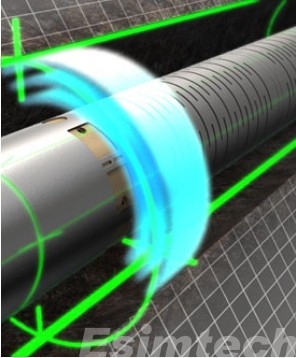
How Sonic Logging Works
The process of sonic logging is performed by lowering a specialized tool called a sonde into a borehole. This sonde is equipped with both transmitters and receivers that emit and capture sound waves. The technique works as follows:
- Sound Wave Emission: The sonde’s transmitter generates high-frequency sound waves, typically compressional (P-waves) and sometimes shear (S-waves), which travel outward into the surrounding rock formations.
- Wave Propagation: As these sound waves move through the rock, their speed depends on the density, elasticity, and composition of the formation. Different rock types and fluids (oil, gas, water) affect the velocity of the waves.
- Wave Detection: The receivers, spaced at specific intervals along the sonde, detect the returning sound waves after they have traveled through the formation
- Travel Time Measurement: The time it takes for the sound waves to travel from the transmitter to the receivers is recorded. This travel time, known as slowness (the inverse of velocity), is used to calculate the speed at which the sound waves passed through the rock.
- Data Processing: The recorded travel times are then processed to determine the mechanical properties of the formation, including:
- P-wave velocity: Provides information about the rock’s bulk density and porosity.
- S-wave velocity: Offers insights into the rock’s shear strength and rigidity.
- Stoneley wave analysis: Helps assess permeability and detect fractures.
- Formation Analysis: By comparing the velocities of different waves and how they interact with the formation, sonic logging can reveal important information about the lithology, porosity, fluid content, and structural integrity of the subsurface rock layers.
Key Concepts in Sonic Logging
- Transit Time: The time taken by the sound wave to travel between two receivers. Shorter travel times indicate higher velocity (denser or harder formations), while longer times suggest lower velocity (softer, porous formations).
- Velocity and Porosity Relationship: Sonic velocities are directly related to rock porosity. Slower velocities often indicate more porous formations, where sound waves encounter more fluid-filled spaces.
- Cement Bond Logging (CBL): In well cementing, sonic logging can be used to evaluate the quality of the bond between the casing and the surrounding rock, ensuring well integrity.
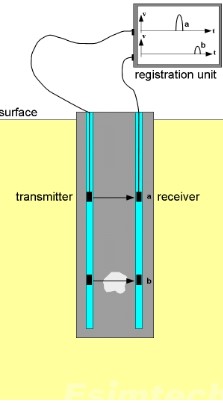
Types of Sonic Logging
This chart provides an overview of the different types of sonic logging techniques, along with their descriptions and key applications in subsurface evaluation and well integrity analysis.
| Type of Sonic Logging | Description | Key Applications |
| Standard Sonic Logging | Measures the travel time of acoustic waves between a source and receiver in the borehole. | Used for determining porosity, lithology, and formation velocity. |
| Dipole Sonic Logging | Employs dipole sources to generate shear waves, providing shear wave velocity in soft formations. | Ideal for anisotropy analysis, fracture detection, and shear wave data in low-velocity formations. |
| Array Sonic Logging | Uses multiple receivers along the tool to provide more detailed formation information. | Enhances resolution for fracture detection, cement bond evaluation, and formation characterization. |
| Cement Bond Logging (CBL) | Evaluates the quality of the cement bond between casing and formation by analyzing waveforms. | Critical for well integrity assessment and zonal isolation. |
| Sonic Velocity Logging | Measures both compressional and shear wave velocities for comprehensive formation analysis. | Used in determining rock mechanical properties and reservoir evaluation. |
| Full Waveform Sonic Logging | Captures complete sonic waveforms for detailed analysis of all wave types (P-wave, S-wave, Stoneley wave). | Valuable for advanced formation characterization, such as identifying fractures and determining fluid types. |
| Stoneley Wave Logging | Measures low-frequency Stoneley waves that propagate along the borehole wall. | Used for determining permeability, fluid mobility, and formation damage. |
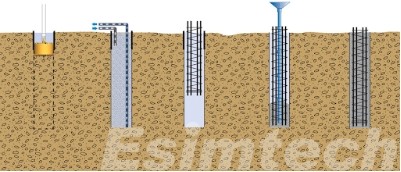
Innovations in Sonic Logging
Sonic logging has undergone significant advancements, making it a more powerful and versatile tool for subsurface evaluation. These innovations have enhanced its accuracy, application scope, and real-time data interpretation in oil and gas exploration.
1. Advanced Sonic Tools
Modern sonic logging tools now incorporate multiple transmitters and receivers, allowing for more precise measurements of formation properties.
- Array Sonic Tools: Featuring multiple transmitters and receivers at varying distances, array sonic tools provide a detailed profile of formation properties and improve the detection of fractures, pore size distribution, and fluid types.
- Dipole Sonic Tools: These tools generate shear (S) waves even in slow formations, where traditional compressional (P) wave data is insufficient. This provides enhanced shear wave velocity measurements, critical for determining rock mechanical properties.
2. Full Waveform Sonic Logging
- Full Waveform Capture: Traditional sonic logging tools measure only the travel time of the first-arrival P-wave. However, full waveform logging captures all the waveforms generated by the tool, including compressional, shear, and Stoneley waves. This detailed data enables more accurate evaluations of formation properties such as permeability, fractures, and porosity.
- Advanced Signal Processing: Full waveform analysis involves processing the entire acoustic signal, allowing for better interpretation of lithology and fluid types. Modern algorithms can separate and analyze the different wave modes, improving formation evaluation accuracy.
3. Real-Time Data Processing
- High-Speed Data Transmission: Innovations in telemetry systems allow sonic logging data to be transmitted in real time. This enables real-time decision-making during drilling operations, allowing for immediate adjustments to drilling or production strategies based on formation data.
- Cloud-Based Data Analysis: Data from sonic logging can now be processed and analyzed in the cloud, providing operators with instant access to detailed formation data. This reduces lag time between data acquisition and analysis, streamlining the workflow in exploration and production environments.
4. Enhanced Borehole Imaging
- 3D Borehole Sonic Imaging: Innovations in sonic logging now allow for 3D imaging of the borehole and surrounding formations. By capturing more complex waveforms, this technology creates high-resolution images of formation boundaries, fractures, and cement bonds. This improves the accuracy of formation characterization, enhancing both reservoir and structural evaluations.
- Acoustic Impedance Imaging: With advanced sonic logging, it is now possible to generate acoustic impedance maps, which help visualize contrasts in rock layers, pore spaces, and fluid content. This is particularly useful for identifying reservoir zones and characterizing caprock integrity.
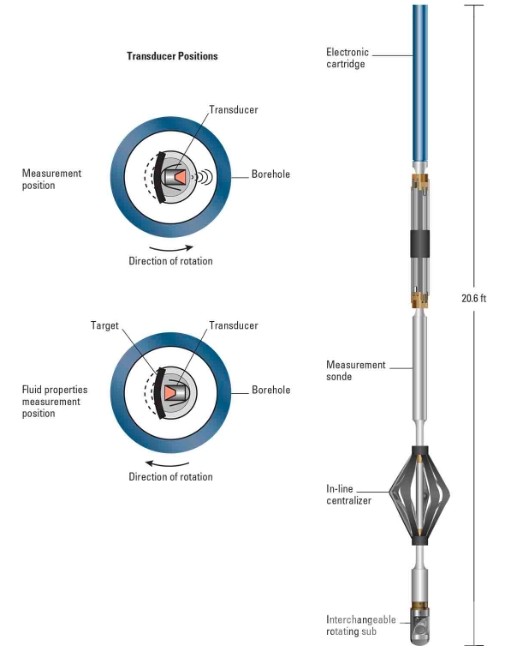
5. Cross-Dipole Shear Wave Imaging
Cross-dipole shear wave technology generates shear waves in two orthogonal directions, providing data on formation anisotropy. This innovation improves the characterization of stress directions and fracture orientations, which is essential for hydraulic fracturing, geomechanical studies, and reservoir management.
6. Integration with Machine Learning
- Predictive Analytics: Machine learning algorithms are being integrated into sonic logging data analysis to predict formation properties more accurately. These models can use vast amounts of historical data to optimize interpretation and provide insights that may not be evident through traditional analysis.
- Automated Pattern Recognition: Machine learning algorithms are also used to automatically detect and classify formations, lithologies, and fractures from sonic data. This speeds up the process and reduces the subjectivity associated with manual interpretation.
7. Sonic Logging While Drilling (LWD)
- Real-Time Formation Evaluation: Sonic logging while drilling (LWD) allows operators to gather acoustic data during the drilling process, without the need to stop operations for wireline logging. This real-time formation evaluation reduces downtime and provides immediate insights into the subsurface.
- Directional Sonic Logging: Directional sonic LWD tools can gather data from specific orientations, allowing for more accurate well placement in complex reservoirs. This is particularly useful in directional and horizontal drilling operations.
8. Cement Bond Logging Enhancements
- Advanced Cement Evaluation: Innovations in cement bond logging now provide higher-resolution data on the quality of the bond between the well casing and formation. This is essential for ensuring well integrity and avoiding issues such as casing leaks or wellbore instability.
- Sonic-Electromagnetic Hybrid Tools: New hybrid tools combine sonic and electromagnetic data to improve the evaluation of cement bond quality, even in challenging conditions such as micro-annuli or poorly cemented zones.
9. High-Resolution Fracture Mapping
- Fracture Detection: Innovations in sonic logging tools have improved their ability to detect and map fractures, both natural and induced. This is especially important in unconventional reservoirs where fracture networks play a critical role in oil and gas production.
- Stoneley Wave Analysis: The analysis of Stoneley waves has become more advanced, enabling better identification of fractures and permeability variations within formations. This data can be used to optimize hydraulic fracturing operations.
Key Ways Simulations are Used for Sonic Logging
This chart captures the essential ways oil and gas simulations contribute to the sonic logging process, from design and data interpretation to operational improvements and training.
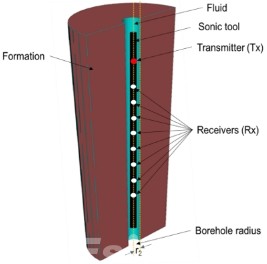
| Simulation Application | Description | Key Benefits |
| Tool Design & Optimization | Simulating the performance of sonic logging tools in various subsurface conditions. | Reduces the need for costly field tests and improves tool accuracy. |
| Wave Propagation Analysis | Modeling how acoustic waves move through different geological formations. | Enhances understanding of rock properties and subsurface structures. |
| Formation Property Prediction | Simulating sonic responses to predict porosity, permeability, and fluid content. | Provides more accurate reservoir characterization. |
| Data Noise Reduction | Simulating noise conditions and processing techniques to filter out interference. | Improves data clarity and interpretation. |
| Borehole Environment Simulation | Modeling conditions such as mud invasion, wellbore irregularities, and pressure changes. | Enhances correction techniques for well integrity evaluations. |
| Fracture Detection | Simulating the effects of fractures and discontinuities on wave travel time. | Helps in identifying fractures and optimizing fracture mapping. |
| Training and Skill Development | Creating virtual environments for operators to practice real-time logging operations. | Enhances operator expertise without risking equipment or operations. |
| Operational Planning | Simulating different well logging parameters to optimize the logging process. | Reduces operational risks and improves efficiency. |
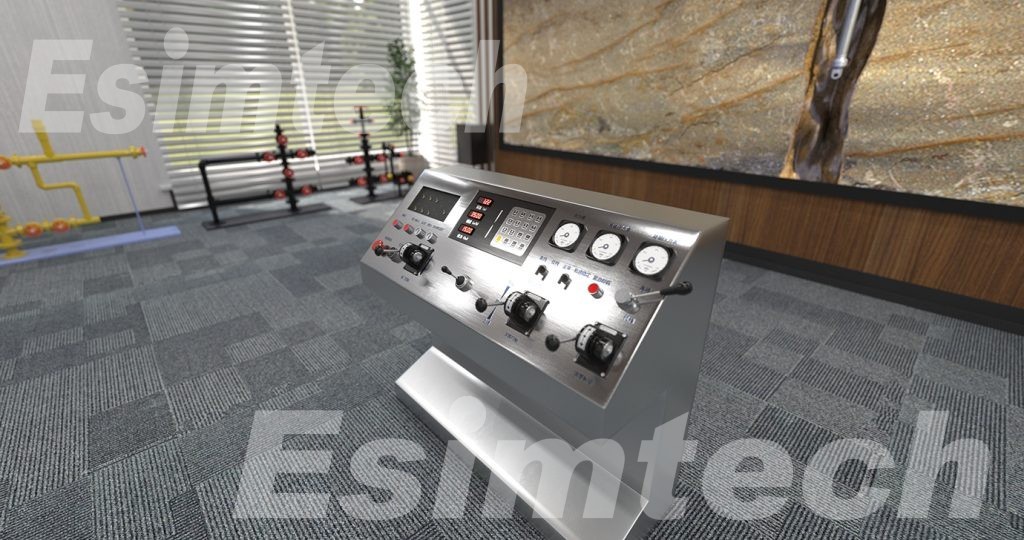
In summary, sonic logging provides a wide range of applications that aid in reservoir characterization, well integrity assessment, and geomechanical analysis. The data provided by sonic logs allow for better-informed decisions in exploration, production, and well completion. Simulations play a critical role in enhancing the accuracy, efficiency and understanding of sonic logging processes in subsurface exploration in the oil and gas industry. As technology continues to advance, the accuracy, resolution, and applications of sonic logging will further improve, making it an even more essential tool for subsurface evaluation and production optimization.
